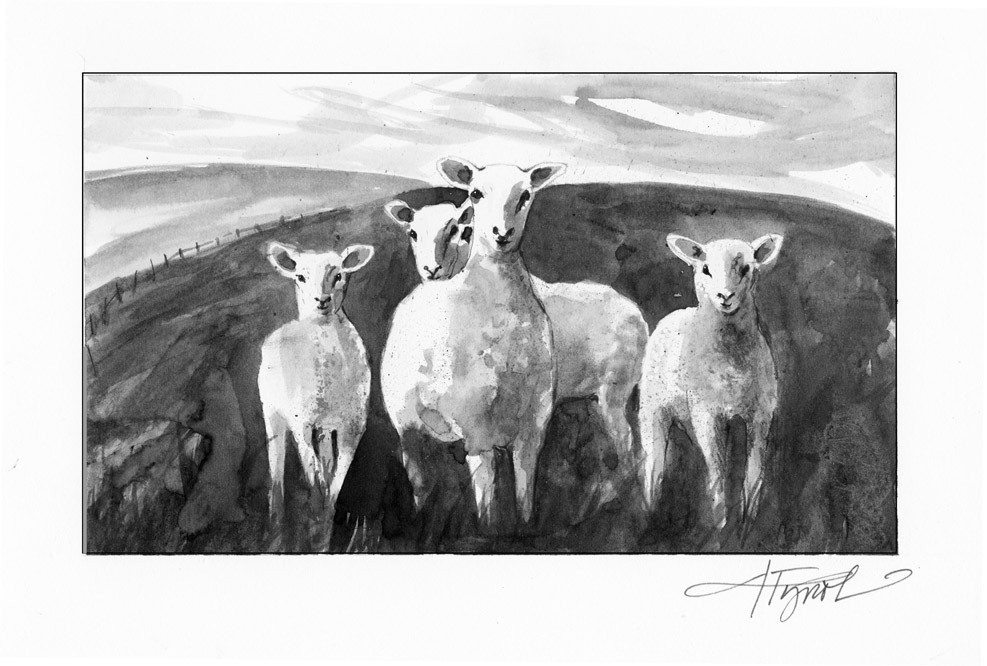
The ethical debates between vegetarians and meat-eaters aren’t likely to be resolved anytime soon. But there’s a new twist to the vegetarian argument that bears examination: the suggestion that eating meat contributes to global warming.
Can this be true?
The pro-warming argument goes like this: ruminants (i.e. cud chewers), such as cattle, bison, sheep, and goats, emit copious amounts of methane as part of their digestion. Lots of animals fart and burp, of course, but ruminants, thanks to specialized bacteria that live in their digestive tracts, produce far more methane than other animals. Since methane is one of the most potent of the greenhouse gasses, trapping roughly 20 times more heat in the atmosphere than an equivalent amount of carbon dioxide, you start to see what the problem is.
We have something like 120 million ruminants being raised for meat in this country. According the Environmental Protection Agency, ruminant digestion accounts for roughly a quarter of our annual methane emissions. Add in the methane from livestock manure, and you’re up to a third.
So more beef cows equals more methane equals more global warming, right? Well, not exactly. The problem is not so much the animals, it’s the fact that humans are adding additional methane into the atmosphere through fossil fuel emissions. Fossil fuel emissions are considered surplus because, unlike bison and cattle, they haven’t been part of the biological recycling of carbon for millions of years.
To see this in perspective, consider North America three centuries ago, when vast herds of methane-belching bison roamed the heart of the continent. There were nearly as many bison then as there are cattle now, somewhere between 60 and 100 million animals. Furthermore, these bison were emitting more methane per head than today’s cattle, since ruminants on an all-grass diet emit more methane than those eating mostly grain. (It’s the grass-digesting bacteria that produce the methane.) So today’s cattle, in essence, have replaced yesterday’s bison in the methane balance. No net change.
But it gets even more interesting. It turns out that back then, ruminants were engaged in rotational grazing, which is to say they ate the grass down to the roots, moved on to greener pastures, and allowed the grass to re-grow. By grazing in such a manner, they improved the soil wherever they went. Grass that is cut short and fertilized with manure grows faster than grass that is never cut, causing more root growth and, ultimately, more carbon to be stored in the soil. The thick, extraordinary soils of the American plains were created, in part, by grazing ruminants. The vast buffalo herds were, in today’s parlance, carbon-sequestering machines.
It’s possible for today’s farmers to re-create the Great Plains model, albeit on a smaller scale. Especially in places like Vermont and New Hampshire, where natural rainfall is sufficient to support good pasture and where the rolling hillsides are often too steep to allow for vegetable cultivation, raising meat using rotational grazing can make ecological sense. A well cared for pasture pulls carbon out of the atmosphere as it grows, then the livestock eats that carbon, causing the grass to sequester carbon as its roots expand, improving the soil.
Meanwhile, the cow or sheep belches out some of the carbon and turns the rest into flesh, which we humans then eat and ultimately return to the atmosphere through our own metabolisms. This is all a closed loop.
Where things get out of whack is when meat is produced in a fossil-fuel intensive manner. Cattle finished on feedlots, with no access to pasture or grass, aren’t doing carbon sequestering of any sort. Moreover, they’re eating mountains of grain that take reservoirs of oil to grow, harvest, transport, and feed to the cattle. It’s not the meat that’s the problem, it’s how it’s being raised.
Of course, it’s possible to carry this argument too far. Raising animals on pasture requires lots of land, and if that land is flat, it might better be used to grow vegetables, which provide more calories per acre than grass-fed meat does. If that land is very steep, it would probably best be left in forest, which would store more carbon per acre than intensively grazed pasture would. But that still leaves a lot of Vermont and New Hampshire available for raising meat and helping kick the fossil fuel habit.
As it happens, the number of farms and farmers in the twin states has been increasing in recent decades, and many of these new operations are involved in grass-fed meat production. If you’re interested in reducing your carbon footprint and helping combat climate change, patronizing such farms is an easy way to make a difference – without having to give up meat.


Discussion *